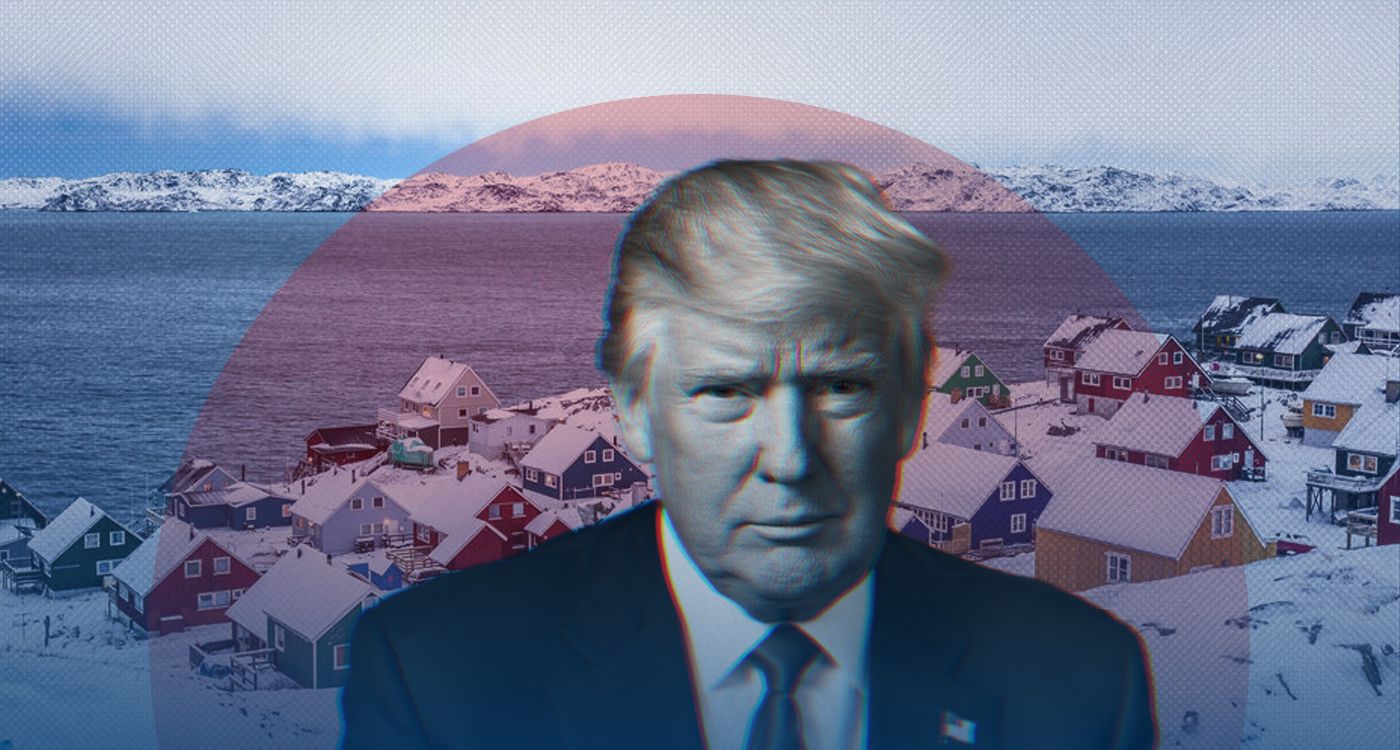- Home
- Middle East
- Why Does Donald Trump Want to Buy Greenland?

©This is Beirut
During a press conference held on Tuesday, January 7, in his residence in Florida, US President-elect Donald Trump reiterated his wish to annex Greenland, an autonomous territory of Denmark, as well as the Panama Canal. He did not dismiss the option of using force to achieve these objectives, stating that both regions are “crucial for the national and economic security of the United States.” This statement prompted strong reactions from the governments involved.
Trump stated that Greenland should be part of the US as an “absolute necessity” for global freedom and security, citing Russian and Chinese naval activities in the region. He even threatened Denmark with “very high” tariffs if it refused to cede control of the territory to the US. Meanwhile, his son, Donald Trump Jr., visited the island on what was described by Greenlandic authorities as a “private” visit.
These expansionist ambitions sparked strong opposition. “We don’t want to be Danes. We don’t want to be Americans. We want to be Greenlanders,” said Múte Egede, the island's pro-independence Prime Minister, during a press conference in Copenhagen on Friday, reiterating that Greenland is not for sale. “Greenland belongs to Greenlanders,” countered Danish Prime Minister Mette Frederiksen.
Jean-Noël Barrot, France's Foreign Minister, stated that the European Union would not allow any nation to “threaten its sovereign borders.”
An Autonomous Territory Confronted with Independence Challenges
Greenland, which is geographically closer to North America than to Europe, has been an autonomous territory of Denmark since 1979. This autonomy enables the country, with its own government, to handle its internal affairs, including health, education and natural resources, while leaving Copenhagen in charge of foreign policy, defense and monetary policy. This reflects a delicate balance between the territory's growing independence and its financial reliance on Denmark.
The island, with a population of 57,000, is known for its low population density and stunning Arctic landscapes. Historically, Greenland was colonized by Denmark in the 18th century before becoming an official territory of the kingdom in 1953. In 2009, Greenland was granted expanded autonomy, allowing it to manage its internal affairs and providing the option to declare independence through a referendum.
“However, this independence remains a distant goal due to the island's economic dependence on Danish subsidies, which make up about a fifth of its annual GDP. Each year, Denmark provides nearly 600 million euros to Greenland to support its economy and public services, including healthcare and education.
A 2019 poll conducted by HS Analyse for the Greenlandic media outlet Sermitsiaq found that nearly two-thirds of Greenlanders favor independence. However, views vary on the right time to pursue it and the potential impact on their quality of life.”
A Highly Sought-After Strategic Territory
Economically, the island relies mainly on fishing, which accounts for more than 95% of its exports.
However, Greenland's vast natural resources, including rare minerals, are attracting international interest, even though oil and gas extraction is currently banned due to environmental concerns.
Furthermore, Greenland plays a central role in NATO's and the US's military strategy. The US base at Pituffik (formerly Thule), located in the island’s northwest, plays a crucial role in the ballistic missile early warning system and in monitoring maritime activities in the Arctic. It is also a key strategic asset for both the US and NATO amid rising tensions with Russia and China.
The base enables surveillance of Russian nuclear submarines in the North Atlantic and tracking of Chinese maritime activities in the Arctic, a region where Beijing aims to expand its influence through its so-called “Polar Silk Road” strategy. This strategic positioning gives Pituffik a central role in ensuring the security and geopolitical stability of the Arctic.
The waters surrounding Greenland, especially the strait between the island, Iceland and the United Kingdom, are strategic for tracking the movements of Russian submarines and Chinese vessels. The region is also vital for securing emerging maritime routes as a result of melting ice.
A Longstanding and Controversial Ambition
In 2019, Trump had already suggested buying the island, an offer rejected by Denmark and deemed “absurd” by Prime Minister Frederiksen. However, this is not the first time the US has expressed interest in annexing Greenland. Denmark rejected similar American proposals in 1867, 1910 and 1946.
The strategic and economic interests of the Arctic remain central to the American agenda, particularly as climate change reshapes the region. The melting ice is opening new maritime routes, such as the Northwest Passage, and providing unprecedented access to previously inaccessible natural resources. In fact, when expressing his intention to purchase the icy island in August 2019, Trump stated that the island's deglaciation (caused by climate change) would release an abundance of natural resources.
These developments strengthen Greenland's geopolitical significance and attract the attention of major powers, including the US, Russia and China. “Greenland needs security, safety, strength and peace. This is an agreement that must be made,” wrote Trump on the Truth Social platform.
Trump's focus on Greenland thus reflects a broader strategy of American influence in strategically important regions. However, this expansionist approach risks increasing tensions with his traditional allies, notably Denmark and the EU.
For Greenlanders, these discussions reignite concerns about their future status. The island is preparing for a parliamentary election in April 2025, which is particularly significant as the issue of independence will be central to the debate.
Although a majority of Greenlanders aspire to independence, achieving it appears difficult without external financial support. Should Greenland gain independence, it might eventually pursue a closer relationship with the US through an association agreement, similar to those with certain Pacific islands.
For the time being, Greenland remains firmly within Denmark's sphere, but the ambitions of the American president are a reminder that this vast island has been a significant geopolitical concern for over a century.
Read more





Comments